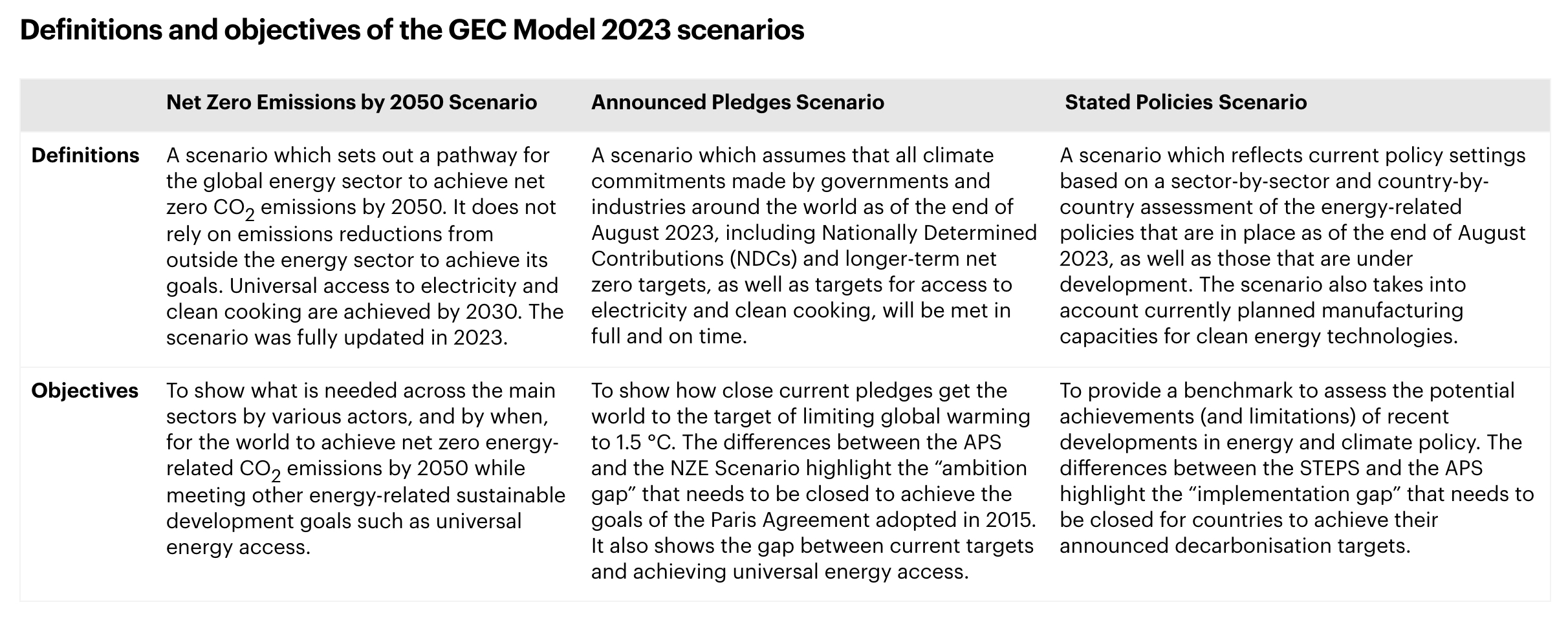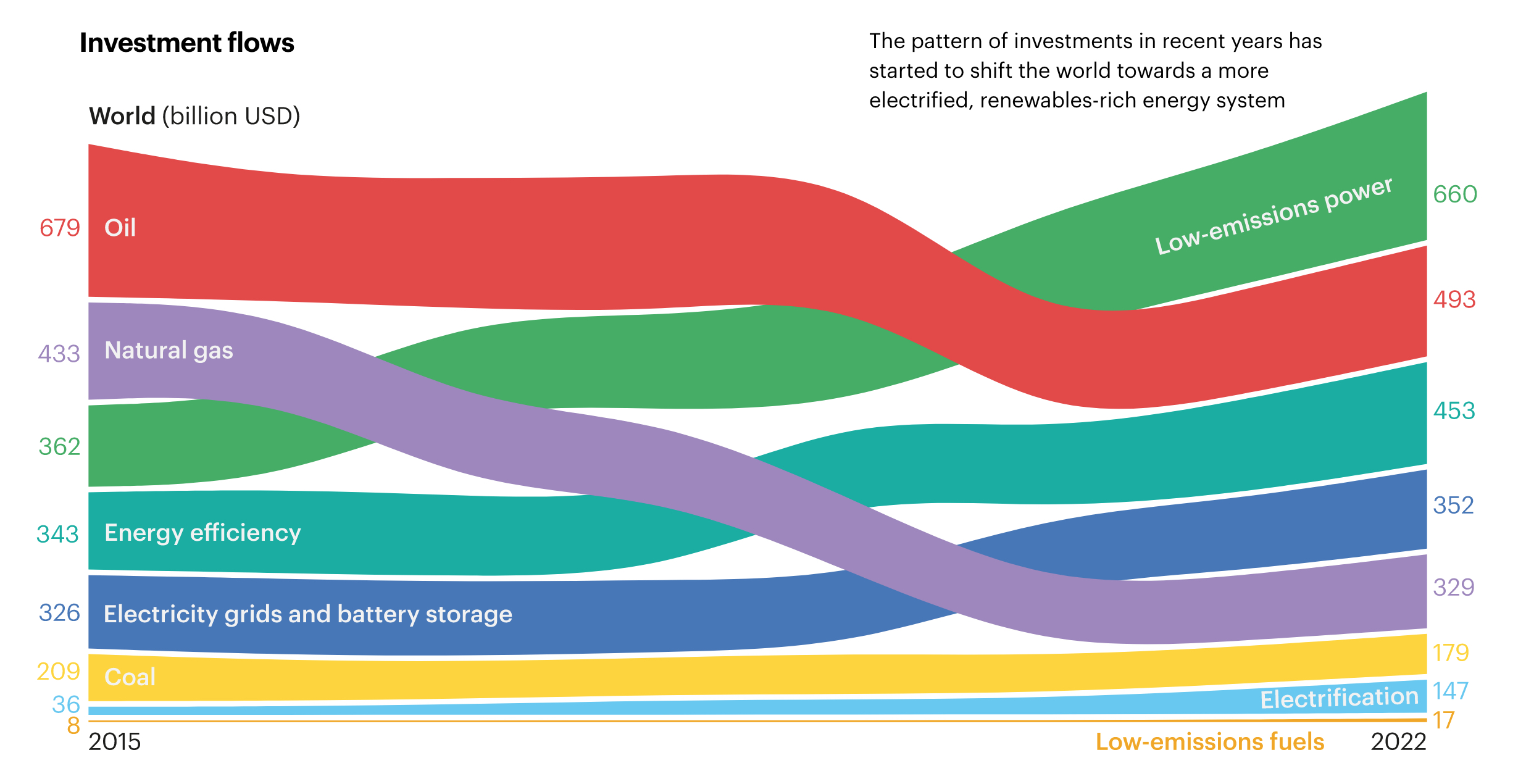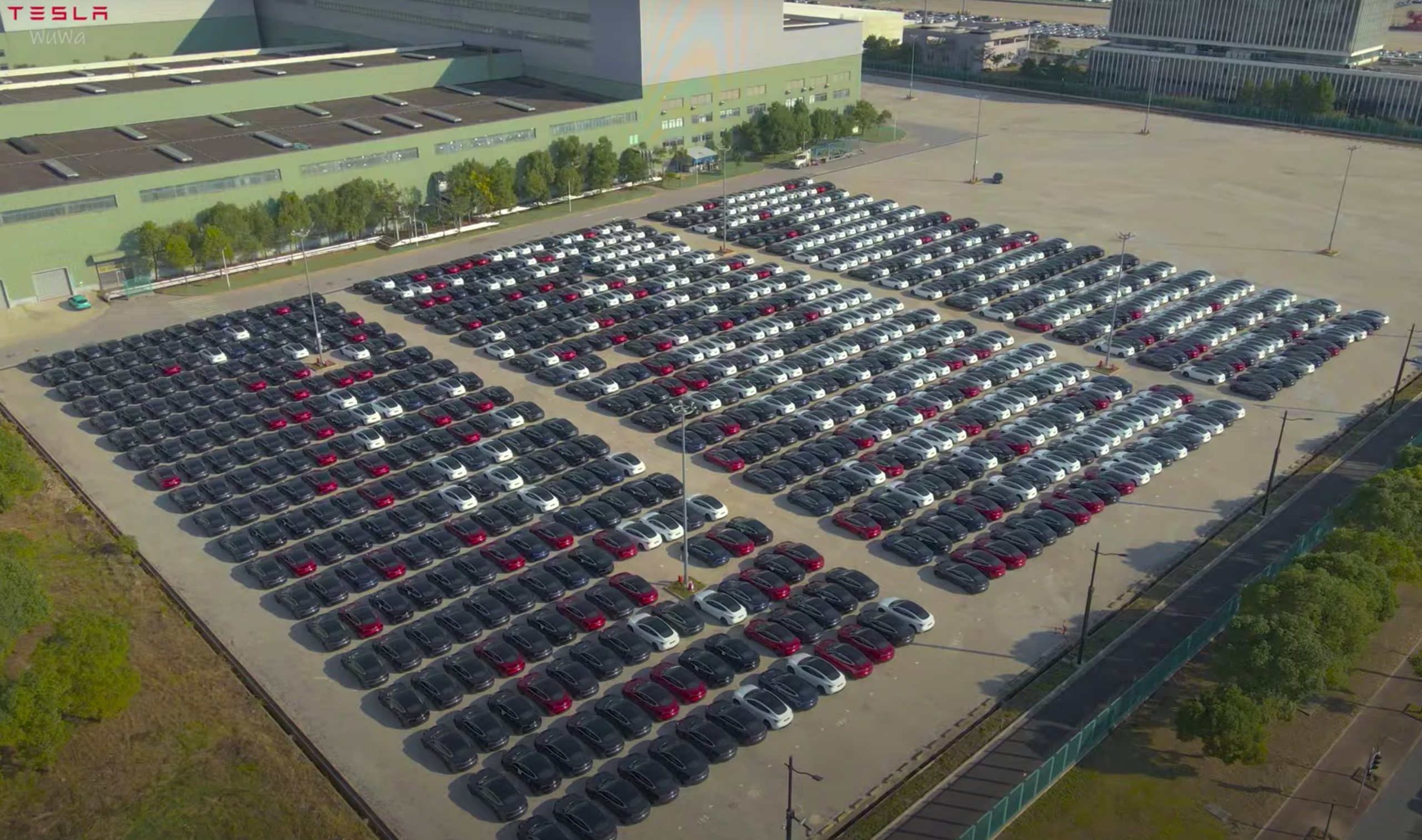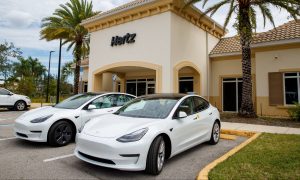Ahead of the United Nations COP28 climate summit in Dubai later this year, the International Energy Agency (IEA) has once again released its yearly report on energy generation and renewables.
The IEA shared the 2023 World Energy Outlook earlier this month, offering a comprehensive look at how energy is generated today and where energy industries are headed. The report is lengthy and includes a handful of insights, notably including that the agency expects there to be almost ten times as many electric vehicles (EVs) on the road by 2030 with the current path of global policies.
The report looked at inputs for three potential scenarios based on the Global Energy Climate (GEC) model: the Stated Policies Scenario (STEPS), looking at currently in-place policies sector by sector and country by country; the Announced Pledges Scenario (APS), which assumes that government and industry climate commitments are met in full and on time; and the Net-Zero Emissions (NZE) by 2050 Scenario, which looks at a specific emissions trajectory set to keep the temperature increases below 1.5 degrees Celsius.
You can see the IEA’s definitions and objectives for looking at each model scenario below.

Credit: IEA | World Energy Outlook 2023
According to the report’s STEPS scenario, EVs comprise roughly 15 percent of car sales globally and are expected to increase to 40 percent by 2030. In addition to the increase in EVs, the agency expects renewable energy to make up 50 percent of the global electricity mix by 2030, jumping from around 30 percent today.
The agency also says that, for the first time ever, it can see a path to peak demand for coal, oil and natural gas within this decade, and it expects global energy-related carbon dioxide (CO2) emissions to peak by 2025.
Fossil fuel market share is also expected to drop to 73 percent by 2030 after floating at about 80 percent for the past few decades.
The agency is also seeing growth in investments in renewable energy, including the adoption of EVs, solar PV generation, and heat pumps and other electric heating equipment being sold more than fossil fuel boilers on a global scale.
Interestingly, the IEA notes that, for every $1 invested in fossil fuels five years ago, $1 also went to clean energy. In 2023, however, for every $1 invested into fossil fuels, there is $1.80 going toward renewable energy, depicting the continued investment increases in clean energy.
You can see the IEA’s chart on investment flows below, showing a decrease in oil demand and increases to low-emissions power sources.

Credit: IEA | World Energy Outlook 2023
Although the report also shows a continued increase in renewable energy investments, the IEA says that stronger policies are still needed if the world hopes to limit global warming to 1.5 degrees Celsius. At the current rate, the IEA says global emissions are high enough to push global average temperatures upward by roughly 2.4 degrees Celsius within this century.
In response to a post with the investment flow chart on X, Tesla Senior Vice President of Powertrain and Energy Drew Baglino also weighed in, emphasizing that there is still more to be done to help transition the world to renewables.
Super interesting charts. Great to see investment shifting to sustainble energy, but we need to do more to accelerate.
— Drew Baglino (@baglino) October 30, 2023
The report touches on several other renewable energy topics, including current geopolitical conflicts going on in the Middle East that could be poised to threaten the security of world energy systems.
You can watch the full live stream of the World Energy Outlook below,
You can also read the IEA’s full press release on this year’s World Energy Outlook here or watch the agency’s full live stream detailing the report below, complete with a Q&A with the agency’s directors.
What are your thoughts? Let me know at zach@teslarati.com, find me on X at @zacharyvisconti, or send your tips to us at tips@teslarati.com.











